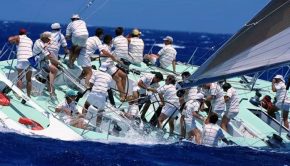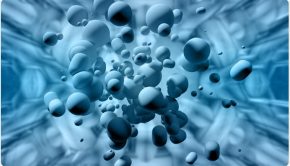America’s Cup Defender Caught Using Solid Fuel
Published on April 1st, 2017
Hamilton, Bermuda (April 1, 2017) – There was drama today as the Fire Department was called after America’s Cup challenger SoftBank Team Japan detected a strong “sulphur-like” smell coming from neighboring Oracle Team USA’s base.
Investigation by the authorities determined that the smell was coming from the foils and the rudders of Oracle’s AC Class boat that was in the water. Despite very vocal objections from the Oracle staff, the area was cordoned off and a CSI team was called to pinpoint the source.
The confidential results, leaked to selected media, revealed how tiny oles were found in the trailing edges of all the underwater appendages. Magnetometer images then showed larger cavities beneath the tiny holes. When a material sample of the appendages was taken, it became clear what new innovation was being tested.
The metallurgical sample was identified as sodium, a member of the Group 1 Alkali metals. Parts of the foils and rudder were cast with many small internal cavities that would act, when submerged in cold water, as a group of propulsion producing “solid fuel” engines.
It is believed that when the sodium reacts vigorously with the water, exothermically forming sodium hydroxide and odorless and colorless hydrogen gas was subsequently being forced out the small pinholes. The net effect of the hundreds of holes was to “jet propel” the foiling cat by an estimated 2-3 knot increased velocity. And, since sodium is lighter than water, there was a second advantage of increased buoyancy.
This is why the proposed races are so short… not because of commercial breaks in the worldwide TV coverage, but because the sodium will eventually dissolve and leave the Oracle boat without foils or steering. It is guessed that a soluble coating is painted over the appendages to prevent the chemical reaction from taking place until just before the starting procedure.
Similarly the boat must be removed from the water and air dried to stop the reaction. This is where the Oracle shore crew erred… they delayed in removing the boat from the water after the completion of the test run. Pollution in the harbor reacted with the hydrogen gas to produce the hydrogen sulfide gas “rotten egg” smell that the Japanese team noticed.
Oracle management admitted the above details in a question and answer period in a hastily-called press conference but assured the media that there was no rule infringement because of a quickly signed rule change by all but ETNZ.










 We’ll keep your information safe.
We’ll keep your information safe.